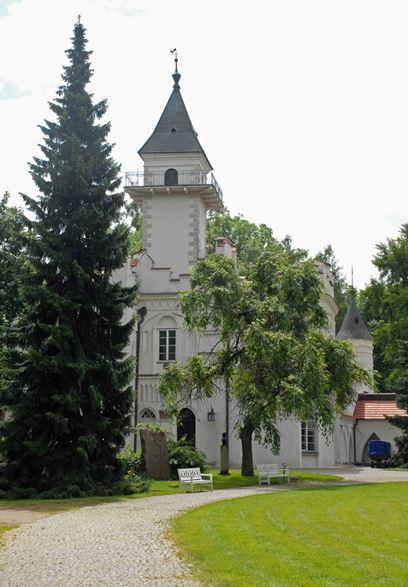
-
 Thank you for your method for mincing jalapeno peppers. I use it!
Przez:domowypatchwork 29Dec2020
Thank you for your method for mincing jalapeno peppers. I use it!
Przez:domowypatchwork 29Dec2020 -
 Thank you!
Przez:domowypatchwork 29Dec2020
Thank you!
Przez:domowypatchwork 29Dec2020 -
 Inka is our chickory coffee. I think that you can use any kind of coffee ...
Przez:domowypatchwork 29Dec2020
Inka is our chickory coffee. I think that you can use any kind of coffee ...
Przez:domowypatchwork 29Dec2020 -
 What a wonderful idea! I will make this with blackberry preserves, without the ...
Przez:Andrea 23Dec2020
What a wonderful idea! I will make this with blackberry preserves, without the ...
Przez:Andrea 23Dec2020 -
 This fish soup looks delicious!
I love soup.
Przez:Andrea 22Dec2020
This fish soup looks delicious!
I love soup.
Przez:Andrea 22Dec2020
A trip to Radziejowice - art, Jerzy Waldorff and running.
I went to Radziejowice with my husband who was taking part in the Chełmoński Run. Since a 10 km run takes a while and I was there with our children, we had to pass the time somehow while waiting for Dad. It turned out that the park-palace complex in Radziejowice is very well suited for that. We found a Greek revivalist Palace, neo-Gothic Castle, Larch Manor House, Swiss House, an old forge and a huge park with numerous ponds.
The name Radziejowice originates from the name of its first owner – the Radziejowski family, which settled there in the 15th century, building the oldest family residence. The grounds, together with all its buildings, have changed hands many times over the course of time. The families of Prażmowski, Ossoliński and Krasiński used to live here. In the 17th century the palace was visited by the baronage, priesthood and kings Zygmunt III Waza, Władysław IV and Jan III Sobieski. The ambition of the Krasińskis – especially the primate Michał, the last of the Krasinskis – was the creation of an intellectual and cultural Warsaw venue in Radziejowice. Among others, the socialites who frequented the place were: Narcyza Żchowska, Wojciech and Juliusz Kossak, Jarosław Iwaszkiewicz, Henryk Sienkiewicz and Józeł Chełmoński. In 1928 the first movie adaptation of Adam Mickiewicz's "Pan Tadeusz" was shot in Radziejowice.
The main attraction of the palace's museum is Poland's largest exhibition of Józef Chełmoński paintings and a collection of the great painter's remembrances. Even though he did not live in Radziejowice but in nearby Kulkówka, he used to be a frequent visitor here.
The current appearance of the palace does not resemble the old baroque residence of the Radziejowski family. Rebuilt at the end of the 18th century and completed at the beginning of the 19th century, it acquired a Greek revivalist character. Museum halls, galleries and visitor apartments can all be found here. The oldest part of the complex constitutes a castle rebuilt from ruins back in the 19th century, consisting of a kitchen and 2 historical apartments.
Construction of the Wooden Manor House was started at the end of the 18th century and completed at the beginning of the 19th century, and it looks like it has been transported live from the times of Poland's nobility. Nowadays it houses 12 hotel rooms, a little salon with a grand piano and serves for small cosy meetings.
A walk in the local park is an extraordinary rest for tourists tired of the noise of the town. The creators wisely used the elements of the natural landscape to create places that combine the elegance of a French park and the picturesque, colorful seeming mess of an English park.
Radziejowice is lucky to be visited by exceptional intellectuals and connoisseurs of art and culture, who make use of the historical interiors and picturesque surroundings to relax or concentrate on their work. Since 1995 Radziejowice Palace has acted as a Home of Creative Work. Jerzy Waldorff used to rest and work here. This eccentric man used to be a music commentator on Polish Radio and a columnist in the weekly Polish magazines "World" and "Politics'. He also used to write books. Thanks to him, we built in Poland the Karol Szymanowski Museum in Zakopane and Theatre Museum in Warsaw. Warsaw townspeople mainly associate him with the creation in 1974 of the Social Care Committee for taking care of the old Warsaw cemetery "Old Powązki". Due to his initiative, every year on the 1st of November there is a fundraising event which is run by famous cultural icons and personalities from the media. In the first week of July in Radziejowice the Summer Festival takes place, the former patron of which used to be Jerzy Waldorff. The idea behind these cultural meetings is the promotion of young artists who are at the beginning of their artistic paths and want to be recognized by a wider audience.
The rain, which had been falling intermittently since the morning, took pity on us and stopped just as the run started, which meant I was able to walk calmly around the park with my children, waiting for it to finish. While walking we found a sculpture gallery and a wooden Noah's Ark, which especially appealed to us. Its creator is Józef Wilkoń – a present day Renaissance man, painter, stage designer, sculptor and illustrator of books.
We will try to go back to Radziejowice once again. Next time we would like to see the palace complex in more detail. Maybe we will organize a picnic in the picnic area, and maybe we will take part in the Chełmoński Run as a whole family.

















